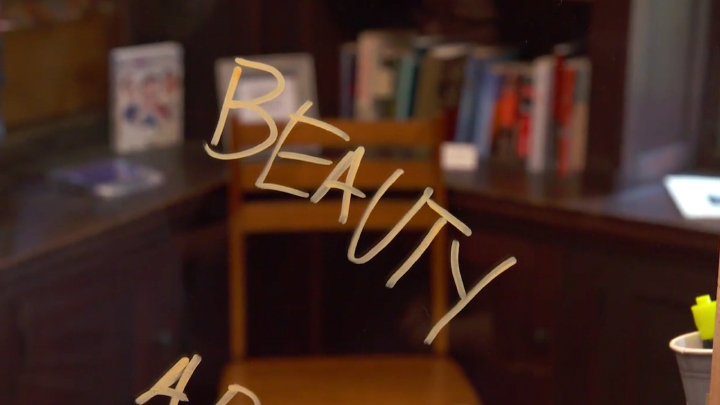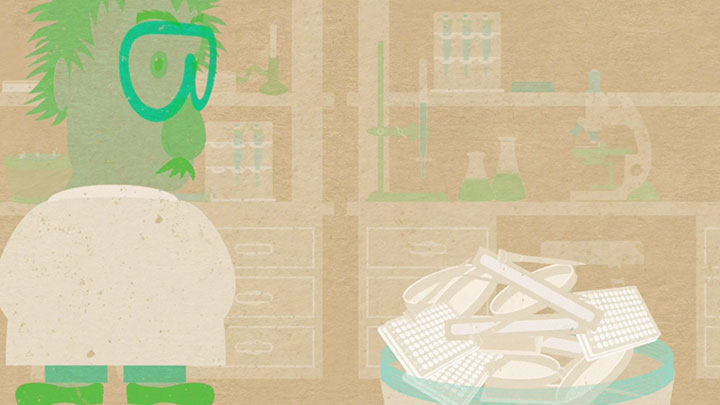Rapid Screening Assay for Biodegradation of Environmental Contaminants
Script
My name is Alex Polasko. I'm a UCLA, a PhD student, and in true L.A. fashion, I am going to talk to you today about Talent Management for Microbes: A Rapid Screening Assay for the Biodegradation of Environmental Contaminants, and I'll talk a little bit more about what all that means.
My research is kind of like a talent agency, but instead of looking at you for talent, I look at microbes. Now, when you think of a microbe, you might think of getting sick or the flu. However, when I look at microbes, I think of them as potential superstars for cleaning contaminated water. Now, over 50% of the United States population depends on groundwater for drinking water, but more than 22% of this water is contaminated. So it becomes crucial to be able to utilize one of the most efficient green technologies to clean this water, which is bioremediation.
Bioremediation, which is the use of microbes which are my unsung heroes to degrade water pollutants, has become a go-to solution for cleaning a lot of polluted aquifers. However, one of the most common problems this technology faces is finding reliable monitoring tools to determine success of these beneficial bacteria. Conventional methods for detecting these bacteria, such as DNA and RNA analyses, are not specific enough, cost a lot of money and are time consuming. The idea is that we're going to conquer this dilemma of trying to accurately assess and detect these beneficial bacteria in the ground, and that's where I come in.
My research focuses on developing a tool, a monitoring tool that can detect specific enzymes in these beneficial bacteria that can degrade water pollutants. An enzyme is one of the most direct roots towards understanding the functions of microorganisms performing in the subsurface and ensure it's the function that we want them to perform. So, if we can detect in real time the presence in biodegradation rates of these bacteria, then we can more rapidly, accurately, and effectively track water pollutants as well as remove them from our water.
This enzyme tool will be able to take environmental samples that have lots of different bacteria in them and detect the contaminant degrading ones via a fluorescent probe. And I like to think of myself as this kind of detective here with the flashlight going out in the night in toxic areas looking at all these exciting microbes and just illuminating the ones that we need to clean the water, as I work in the lab in a white lab coat.
Okay. How does this assay or this technology or monitoring tool works is that we take a fluorescent probe that can interact and bind with the enzymes in the microbes that can degrade the contaminants. Once this binding happens, the cells produce a fluorescence that can be measured using a spectrophotometer, and my goal to develop a correlation between enzyme activity as measured by this fluorescence and the biodegradation rates these various microbes have for any type of toxin that might be present in our water.
Now, coincidentally, this enzyme tool is actually quite similar to a rapid pregnancy test kit which many of the women and men have probably seen. So, just as a pregnancy test kit gives a color indicator when a woman is pregnant and the kit binds with the hormones in a woman's urine or sample, my kit will be able to produce a fluorescence when the key microbial enzymes that can degrade the contaminants are also present. This technology allows for a greater understanding of how quickly and efficiently our water can be cleaned up, and that knowledge is important for our engineers, our policymakers, and our citizens alike because with that knowledge we can better understand how quickly and effectively we can clean our water.
Now, when I think back to applying for the NEB Passion in Science Award, I think back to my journey towards becoming a scientist. A journey where experimental failures are prevalent, progress may be slow, and what can go wrong probably will. But, for me, what I realize is that I couldn't be happier to follow in the footsteps of the passionate scientists before me, because I believe that with hard work and perseverance we can gain greater access to water and keep our environment cleaner longer. Thank you.
Related Videos
-

From Waste to Energy -

Environmental Stewardship -

Can We Reduce Our Impact on the Environment?

